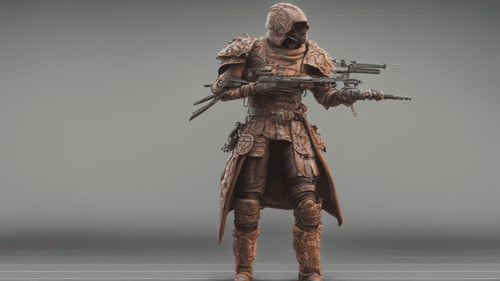
Introduction
In the ever-evolving landscape of artificial intelligence, one remarkable innovation has been capturing the attention of creative minds and tech enthusiasts alike: text to image AI free. This groundbreaking technology empowers individuals and businesses to transform textual descriptions into stunning visual representations, pushing the boundaries of imagination and revolutionizing the creative process. In this article, we delve deep into the realm of text to image AI, exploring its applications, benefits, and the limitless possibilities it offers. Join us as we embark on a journey to understand the fusion of words and images, facilitated by the ingenious capabilities of AI.
Text to Image AI Free: Empowering Creativity
Enhancing Expressive Storytelling
In a world where visual content reigns supreme, the ability to effortlessly translate text into captivating images is a game-changer for storytellers. Writers, bloggers, and content creators can now give life to their narratives by generating visual elements that resonate with their words. Imagine a fantasy realm brought to life with intricate details or a historical account illustrated with period-accurate visuals. Text to image AI bridges the gap between imagination and reality, allowing narratives to transcend the boundaries of language.
Simplifying Design Ideation
For designers, brainstorming and ideation are essential stages in the creative process. Text to image AI free offers a dynamic tool for generating preliminary design concepts from textual descriptions. Designers can articulate their ideas through words, enabling AI to generate corresponding images that serve as visual blueprints. This streamlined approach accelerates the design iteration process, facilitating quicker exploration of creative possibilities.
Enabling Personalized Visual Communication
In the realm of digital communication, personalization is key to engaging audiences. Text to image AI empowers individuals to create personalized visuals that resonate with their target audience. Whether it's crafting custom birthday cards, generating social media graphics, or designing unique presentations, this technology facilitates the creation of tailor-made visuals that convey messages with a personal touch.
The Mechanics Behind Text to Image AI Free
Deep Learning Algorithms at the Core
At the heart of text to image AI lies deep learning, a subset of machine learning that mimics the human brain's neural networks. These algorithms analyze textual input, deciphering the context, emotions, and details embedded within the words. The AI then translates this understanding into visual elements by leveraging an extensive database of images, textures, and patterns.
Generative Adversarial Networks (GANs)
Generative Adversarial Networks, or GANs, play a pivotal role in text to image AI. GANs consist of two neural networks—the generator and the discriminator—locked in a creative duel. The generator crafts images from text descriptions, while the discriminator evaluates the authenticity of these images. Through iterative competition, GANs produce increasingly convincing and realistic visuals, creating a harmonious blend of textual input and visual output.
Dataset Diversity and Training
The effectiveness of text to image AI hinges on the diversity and quality of its training dataset. Developers curate vast libraries of images paired with corresponding text to teach the AI the nuances of context-based image generation. The AI learns to associate textual cues with specific visual elements, enabling it to produce coherent and contextually accurate images.
Applications and Impact
Enriching E-Commerce Experiences
In the e-commerce landscape, visuals are paramount to influencing purchasing decisions. Text to image AI free enhances online shopping by generating lifelike product images from textual descriptions. This technology eliminates the need for extensive photoshoots and post-production editing, enabling retailers to showcase their products more efficiently and attractively.
Revolutionizing Storyboarding and Previsualization
Storyboarding and previsualization are integral to filmmaking, advertising, and animation industries. Text to image AI streamlines these processes by rapidly generating storyboard panels from script excerpts. Filmmakers and advertisers gain a visual preview of their projects, making informed decisions before production even begins.
Accelerating Architectural Visualization
Architects and urban planners leverage text to image AI to expedite architectural visualization. Detailed descriptions of buildings and urban landscapes are transformed into realistic visualizations, facilitating better communication with stakeholders and expediting project approvals.
FAQs
How Accurate are the Generated Images?
The accuracy of generated images depends on the quality of the training dataset and the sophistication of the AI model. As technology advances and datasets improve, the accuracy continues to enhance, yielding more realistic and contextually coherent visuals.
Is Text to Image AI Limited to Specific Languages?
While many text to image AIs are trained on major languages, the technology's adaptability allows for expansion to various languages. Developers can train models on different linguistic datasets, broadening the AI's language proficiency.
Can Individuals with No Design Experience Use Text to Image AI?
Absolutely! Text to image AI is designed to be user-friendly, catering to individuals without design experience. Its intuitive interfaces and user-centric design make visual content creation accessible to a wider audience.
Are There Any Copyright Concerns with Generated Images?
Copyright concerns arise when using images generated by AI, as the source dataset may contain copyrighted material. It's advisable to use AI-generated images for personal projects or to ensure that the dataset used for training is copyright-compliant.
What is the Role of Human Intervention in the Process?
Human intervention plays a role in curating training datasets, fine-tuning AI models, and ensuring the generated images align with the intended context. Human oversight enhances the quality and relevance of AI-generated visuals.
What Does the Future Hold for Text to Image AI?
The future of text to image AI is brimming with possibilities. As AI algorithms become more sophisticated and datasets grow in size and diversity, we can anticipate even more realistic, contextually accurate, and visually captivating images generated from text descriptions.
Conclusion
In a world where creativity knows no bounds, text to image AI free emerges as a powerful ally, fusing the art of language with the magic of visual representation. From expressive storytelling to simplifying design ideation, this technology is reshaping industries and empowering individuals to communicate and create in unprecedented ways. As we journey forward, the evolution of text to image AI promises a future where imagination takes form effortlessly, forever changing the landscape of creativity.